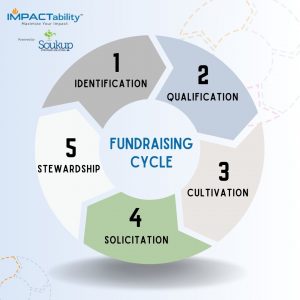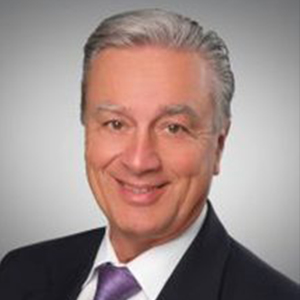All nonprofit organizations either have a major gifts program or hope to have one in the future, but what stops fundraisers from going after large donations today? Perhaps fundraisers don’t know where to begin, and getting numerous major gifts just seems like magic – magic other fundraisers have. Don’t be discouraged! We sat down with a major gifts guru, Dr. Lou Traina, for a multi-part interview and discovered there is an art and science to major gifts that you can learn. Here Dr. Traina speaks on the best way to cultivate prospective donors.
JoAnn Lawrence: You said that when you go into the cultivation phase with a prospective donor, you’re informing them–that it’s an educational process. Tell us about how you find the magic which will make the person excited enough to make a large gift: the perfect match of what the organization needs and a gift that the donor feels compelled to make.
Lou Traina: I would start with the problem statement. I would show evidence. If the problem is bullying, for example, I would give local data on bullying and have credible sources. I would ask them, “did you realize that X number of children are bullied?” Then I would give state data and national data because I want them to know that their gift locally is also going to impact state and national conditions.
JoAnn Lawrence: In other words, you first try to figure out if they care about the problem, and if so, if they are passionate about trying to solve it. What is the process of cultivating a prospective donor?
Lou Traina: After sharing evidence about the problem and the magnitude of the problem, I would talk about the purpose of the organization I’m with, how we are addressing the problem, and what their gift could do in relation to solving the problem. This way a prospective donor really understands that this is a good investment. Many donors found success in today’s free enterprise system, so investment giving is usually a preference. This is especially true if it’s a major gift and one that can nudge the nonprofit agency a step or two forward. It’s important that the agency provides sufficient evidence that their gift will result in the outcomes promised. It’s equally important that each relationship-building step is in the best interest of the donor. It’s all about building relationships, being authentic, and reaching a level of trust. The donor needs to have trust that the gifts will be used as promised and have faith that the outcomes articulated will be accomplished.
I like to engage in conversation with the donor about how my agency is addressing the problem statement and then present opportunities for giving that support the solutions provided by my agency. When we share success stories, donors are often eager to talk about their experiences. They provide suggestions, ideas that come from years of experience and wisdom. Good fundraisers learn from these meetings, and they look at each one as an opportunity to reflect on the experience because we are usually speaking with someone who is a lot wiser. When driving the major gift fundraising vehicle, I learned early on in my career that it is more about the donor’s philanthropic needs than the organization’s needs. Raising major gifts has little to do with salesmanship. Rather, it has everything to do with leadership skills and leadership attributes. The relationship-building process will take time, so a fundraiser needs to be patient and look at each contact with the donor as a gift. They reflect on each contact and ask the hard questions such as: how can I improve my skills and attributes; what did I learn that will make me a better fundraiser, a better person? Good fundraisers are reflective practitioners. Each experience is a learning experience. Each experience will improve you as a leader, and each experience will bring you closer and closer to the kind of gift that will have a momentous impact not only on the agency but on the donor. This is why I love to raise major gifts and the fundraising process.
To raise major gifts, the agency needs to engage in a process we call Moves Management. I prefer using this system only for major gifts because each move or strategy is designed for one person or one family. Each strategized move or step is always in the best interest of the donor. A Moves Management Committee or a fundraiser will create a plan for the prospective donor through a system for making sure we stay on target with the cycle of identifying, qualifying, cultivating, solicitation, recognition, and stewardship.
 JoAnn Lawrence: When you say “moves,” do you mean all the various touchpoints that usher a prospective donor toward giving a donation? How would you keep track of that?
JoAnn Lawrence: When you say “moves,” do you mean all the various touchpoints that usher a prospective donor toward giving a donation? How would you keep track of that?
Lou Traina: Yes. It’s important that you prepare each of the prospective donor’s moves through the cycle of fundraising. Nonprofit organizations usually have wealth engines to help identify prospects and then track moves in their donor database. I recommend working with wealth engines that help to qualify prospects based on their capacity, propensity, and affinity scores. Once this is done, each prospect is ranked and a profile report created. The profile reports are reviewed and discussed by the Moves Management Committee or fundraiser. Each meeting with the donor will be tracked until the committee decides the prospect is ready for an ‘ask.’ This is followed by the next step in the fundraising cycle, which is recognition and stewardship. This is an oversimplification of the process. We will need another interview to get into the details and nuances of Moves Management!
If done correctly you will often hear these words: ‘I appreciate you bringing this to me. I want to thank you for that. This all sounds very interesting.’ Or they might say, ‘I do have an interest, but the timing is not right,’ because they just wrote a big check to the hospital or to the university up in Milwaukee or whatever it might be. Then you’re going to say, ‘great, that’s wonderful. I’m so glad that you have an interest.’ You can then ask them, ‘what would you like us to do from here? What would be important to you?’ Remember, it’s always about successful Moves Management when raising major gifts.



